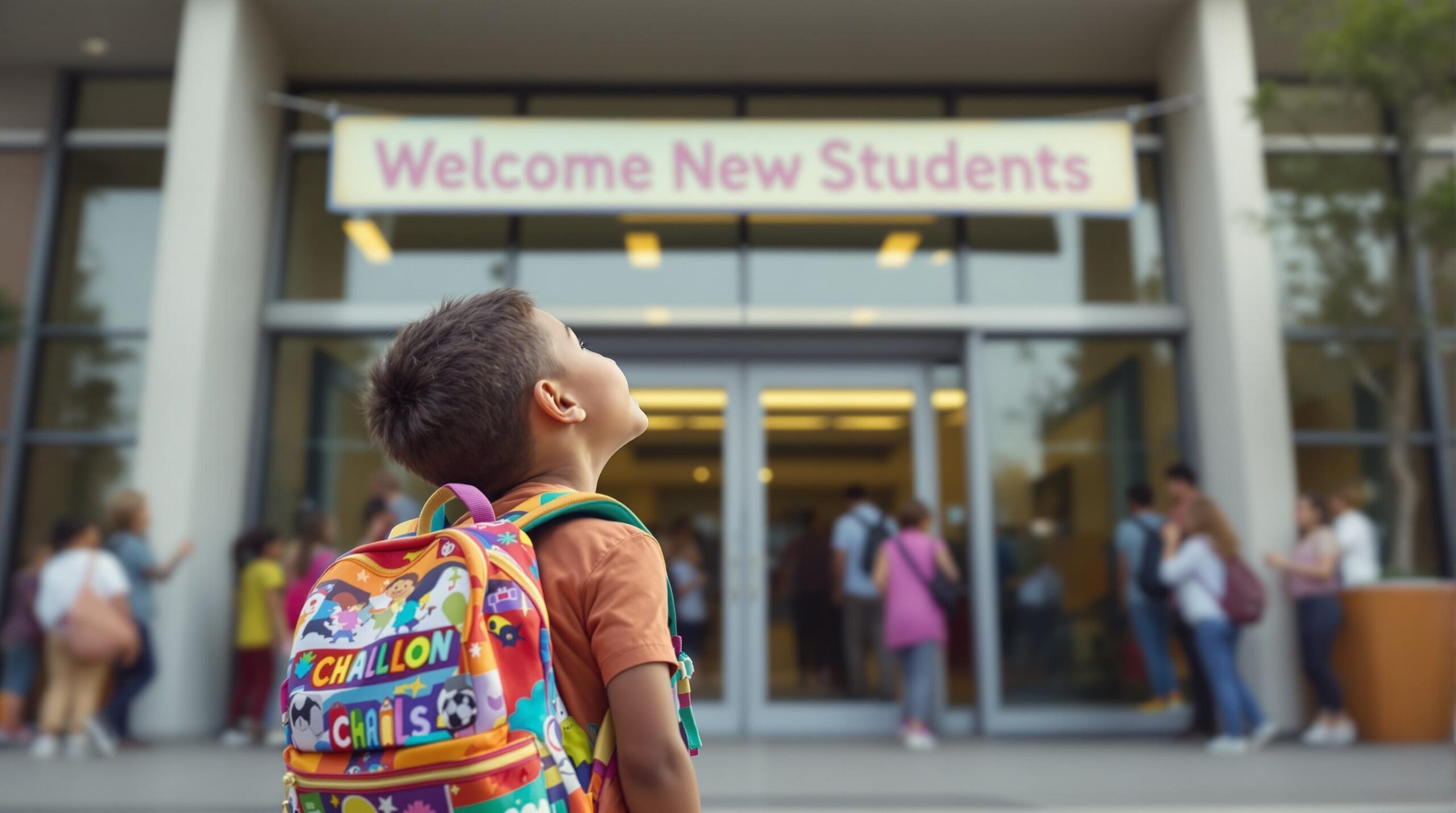Table of Contents
ToggleTransitioning your child between different schooling types can be a significant milestone in their educational journey. As a parent, understanding how to navigate this process effectively is crucial for your child’s success and well-being. This comprehensive guide will help you prepare for and manage the transition, ensuring a smooth experience for your child.
Understanding Child Development Stages
Before diving into the transition process, it’s essential to grasp the concept of child development stages. Children progress through distinct developmental phases, each marked by specific cognitive, social, and emotional milestones. Piaget’s Theory of Cognitive Development outlines four main stages:
- Sensorimotor stage (birth to 2 years)
- Preoperational stage (2 to 7 years)
- Concrete operational stage (7 to 11 years)
- Formal operational stage (11 years and older)
Each stage brings unique characteristics and capabilities. For instance, during the preoperational stage, children develop language skills and symbolic thinking but struggle with logic and taking others’ perspectives. Understanding these stages helps parents and educators set appropriate expectations and provide suitable support during transitions.
Keep in mind that while these stages provide a general framework, every child develops at their own pace. Some may reach milestones earlier or later than their peers, which is completely normal. Regular developmental assessments can help track your child’s progress and identify any areas that might need extra attention during the transition.

Preparing Your Child for the Transition
Transitioning between different schooling types requires careful preparation. Here’s how you can set your child up for success:
Assess Your Child’s Current Stage
Start by evaluating your child’s developmental stage and comparing it to the requirements of the new schooling environment. This assessment will help you identify potential challenges and areas where your child might need additional support. For example, if your child is moving from a play-based preschool to a more structured elementary school, you might focus on developing their ability to follow instructions and sit for longer periods.
Research the New School Environment
Each schooling type has its own set of expectations and requirements. Take the time to thoroughly research the new environment your child will be entering. This might include:
- Curriculum and teaching methods
- Daily routines and schedules
- Social expectations and peer interactions
- Physical environment and classroom setup
By understanding these aspects, you can better prepare your child for what lies ahead. For instance, if you’re transitioning from homeschooling to traditional school, you might focus on helping your child adjust to a more structured classroom environment and interacting with larger groups of peers.
Address Developmental Delays or Special Needs
If your child has any developmental delays or special needs, it’s crucial to address these before and during the transition. Work with healthcare providers, therapists, and educators to develop a plan that supports your child’s unique requirements. This might involve:
- Arranging for additional support services in the new school
- Creating an Individualized Education Program (IEP) if necessary
- Discussing accommodations with the new teachers
By proactively addressing these needs, you can help ensure a smoother transition and set your child up for success in their new environment.
Providing Emotional and Social Support
Emotional and social support is paramount during transitions, especially for younger children. Here’s how you can support your child’s emotional and social development:
Encourage Social Interactions
Help your child develop essential social skills by providing opportunities for interaction with peers. This could include:
- Arranging playdates with future classmates
- Enrolling in extracurricular activities or clubs
- Visiting local playgrounds or community centers
These experiences will help your child feel more comfortable in social situations and make it easier for them to form friendships in their new school environment.
Maintain Stability at Home
During times of change, it’s crucial to provide a stable and reassuring home environment. Stick to familiar routines and traditions to give your child a sense of security. This might include:
- Consistent bedtime routines
- Regular family meals
- Dedicated one-on-one time with each parent
By maintaining stability at home, you’re providing a safe haven for your child to process the changes they’re experiencing in their school life.
Address Emotions Openly
Encourage your child to express their feelings about the transition. Create a safe space for them to share their excitement, fears, and concerns. Validate their emotions and offer reassurance. You might say something like, “It’s okay to feel nervous about starting a new school. Many kids feel that way. Let’s talk about what you’re excited about and what’s worrying you.”
Effective Communication and Collaboration Strategies
Strong partnerships between parents, teachers, and caregivers are essential for a successful transition. Here’s how to foster effective communication and collaboration:
Establish Open Lines of Communication
From the outset, establish clear and open lines of communication with your child’s new teachers and school administrators. This might include:
- Attending parent-teacher conferences and school events
- Using school-provided communication platforms or apps
- Scheduling regular check-ins with teachers
By staying informed and involved, you can quickly address any issues that arise during the transition period.
Share Relevant Information
Provide the new school with pertinent information about your child’s learning style, strengths, and challenges. This might include:
- Previous school records and assessments
- Information about any special needs or accommodations
- Details about your child’s interests and extracurricular activities
This information will help the new teachers understand your child better and provide appropriate support from day one.
Set Shared Goals
Work with your child’s teachers to set shared goals for the transition period. These goals might focus on academic progress, social integration, or emotional well-being. Regularly review and adjust these goals as needed. This collaborative approach ensures everyone is working together to support your child’s success.
Remember, effective communication with teachers is key to addressing any challenges that may arise during the transition.
Anticipating and Addressing Potential Challenges
While every child’s experience is unique, there are some common challenges that many face when transitioning between schooling types. Being prepared for these can help you navigate them more effectively:
Separation Anxiety
Separation anxiety is common, especially for younger children or those transitioning from homeschooling to traditional school. To address this:
- Practice short separations before school starts
- Develop a consistent goodbye routine
- Provide a comfort object for your child to take to school
Remember that separation anxiety usually improves with time and consistent, supportive responses from parents and teachers.
Adjusting to New Routines
Different schooling types often come with different daily routines. Help your child adjust by:
- Gradually shifting sleep schedules before school starts
- Creating a visual schedule of the new daily routine
- Practicing new skills, like packing a backpack or using a locker
Consistency and patience are key as your child adapts to these new routines.
Academic Expectations
Changes in academic expectations can be challenging. Support your child by:
- Reviewing the new curriculum and identifying any gaps in knowledge
- Providing additional support or tutoring if needed
- Encouraging a growth mindset and emphasizing effort over results
Remember, it’s normal for there to be an adjustment period as your child adapts to new academic standards.
Social Challenges
Entering a new social environment can be daunting. Help your child navigate this by:
- Role-playing social situations and problem-solving strategies
- Encouraging participation in school clubs or sports teams
- Maintaining connections with old friends while fostering new friendships
Building a strong social network can significantly ease the transition process.
Long-Term Support and Adjustment
Remember that the transition process doesn’t end after the first day or even the first month of school. Continue to provide support and monitor your child’s progress over time.
Regular Check-ins
Schedule regular check-ins with your child to discuss their experiences, challenges, and successes. These conversations can help you identify any ongoing issues and celebrate progress.
Continuous Communication with School
Maintain open lines of communication with teachers and school staff throughout the year. This ongoing dialogue can help you stay informed about your child’s progress and address any concerns promptly.
Flexibility and Adaptability
Be prepared to adjust your approach as needed. What works initially may need to be modified as your child grows and the school year progresses. Stay flexible and open to new strategies.
As your child grows older, the transition process will evolve. For instance, transitioning from high school to adulthood brings its own unique set of challenges and considerations.
Conclusion
Transitioning between different schooling types is a significant event in your child’s educational journey. By understanding child development stages, preparing thoroughly, providing emotional and social support, fostering effective communication, and anticipating challenges, you can help ensure a smooth and successful transition for your child.
Remember, every child is unique, and what works for one may not work for another. Stay attuned to your child’s needs, maintain open communication with educators, and be willing to adapt your approach as needed. With patience, support, and preparation, your child can thrive in their new educational environment.
For families considering alternative educational approaches, learning about unschooling and self-directed learning can provide additional perspectives on educational transitions.
Sources:
American Military University – Major Theories of Child Development: Frameworks for Learning
Child Mind Institute – Complete Guide to Developmental Milestones
National Institute of Child Health and Human Development – The NICHD Study of Early Child Care and Youth Development
Office of Head Start – Early Childhood Learning and Knowledge Center
National Association for the Education of Young Children
American Academy of Pediatrics
U.S. Department of Education
National Institute of Mental Health













This Post Has One Comment
Pingback: How to Choose the Best School for Your Child’s Learning Style – GuideForKids
Comments are closed.